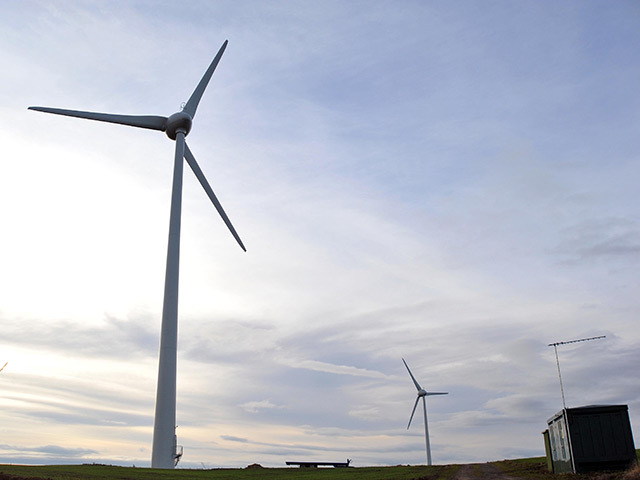
A green energy firm has launched its battle to build a windfarm on an iconic mountain – by claiming festooning it with 14 turbines would not ruin the landscape.
P1 Renewables is bidding to have a Highland Council decision to reject its plans for Ben Wyvis overturned by the Scottish Government.
And on the opening day of a public local inquiry yesterday the company drafted in an expert witness to defend its proposals to site 14 masts on the landmark’s slopes.
The 377ft tall turbines would be erected at Carn Gorm, on the southern slopes of the Ben Wvyis massif above Strathgarve Forest, about two miles north-east of Garve.
Highland Council blocked the scheme last year amid fears over the impact it would have on wild land.
PI Renewables appealed, and for the next nine days a public local inquiry will be held, ironically in the Ben Wyvis Hotel in the village of Strathpeffer.
At stake is whether or not the mountain, set in a Special Landscape Area, which can be seen for miles around, including from Inverness, the Black Isle and across the Moray Firth, should have the turbines on its foothills.
More than 100 objections have been lodged, including from government agency Scottish Natural Heritage, which led the challenge yesterday.
Objections have also come from the Mountaineering Council of Scotland, the John Muir Trust, former sheriff principal for the north Sir Stephen Young and Earl of Cromartie John Mackenzie, chief of the Clan Mackenzie.
Yesterday, James Welch, landscape and visual witness for PI Renewables, told the inquiry that he did not accept that perceived areas of wild land would be significantly impacted by the project apart from perhaps when seen from Little Wyvis, a foothill or “node” beside the main mountain.
Scottish Natural Heritage solicitor Rod McKenzie argued that there would be a cumulative effect on wild land from the PI project when added to the impact of other windfarms in the area.
This, claimed Mr McKenzie, would negatively affect the quality of wildness on the Ben Wyvis massif.
But Mr Welch replied: “No. I consider it inconceivable that a significant impact could amount to an unacceptable impact on the integrity of the wild land area and the quality of wildness.
“If there is a cumulative effect it means there is already a baseline influence of development on the wildness perceptual qualities of this area, and I don’t see the additional project to be a significant one.”
Highland Council’s counsel, advocate James Findlay, suggested Mr Welch had underestimated the visual impact in his report based on photo montages and a matrix used to categorise visual sensitivity from various viewpoints.
Mr Welch said: “I rely on my experience over the years and I give regard to other inquiries I have been involved in and it comes back to my professional judgment.
“Inevitably when you look at images like this you fall into a telephoto shot of a big panorama.”
Both the developer and objectors will be stating their cases to the Scottish Government reporter, Robert Maslin, during the course of the inquiry, which is expected to last 10 days and will include evidence, site visit and submissions.
Mr Maslin will then decide whether to grant planning permission.
Mr Welch will continue his evidence today when he will be questioned by the Mountaineering Council of Scotland.
The local authority claims the application is contrary to policies of the Highland-wide Local Development Plan as the visual impact of the development would be “significantly detrimental” to the Ben Wyvis Special Landscape Area and the Ben Wyvis mountain massif in general.
The council will also argue that the application would be detrimental to wild land which includes Rhiddoroch, Beinn Dearg and Ben Wyvis.
Recommended for you
